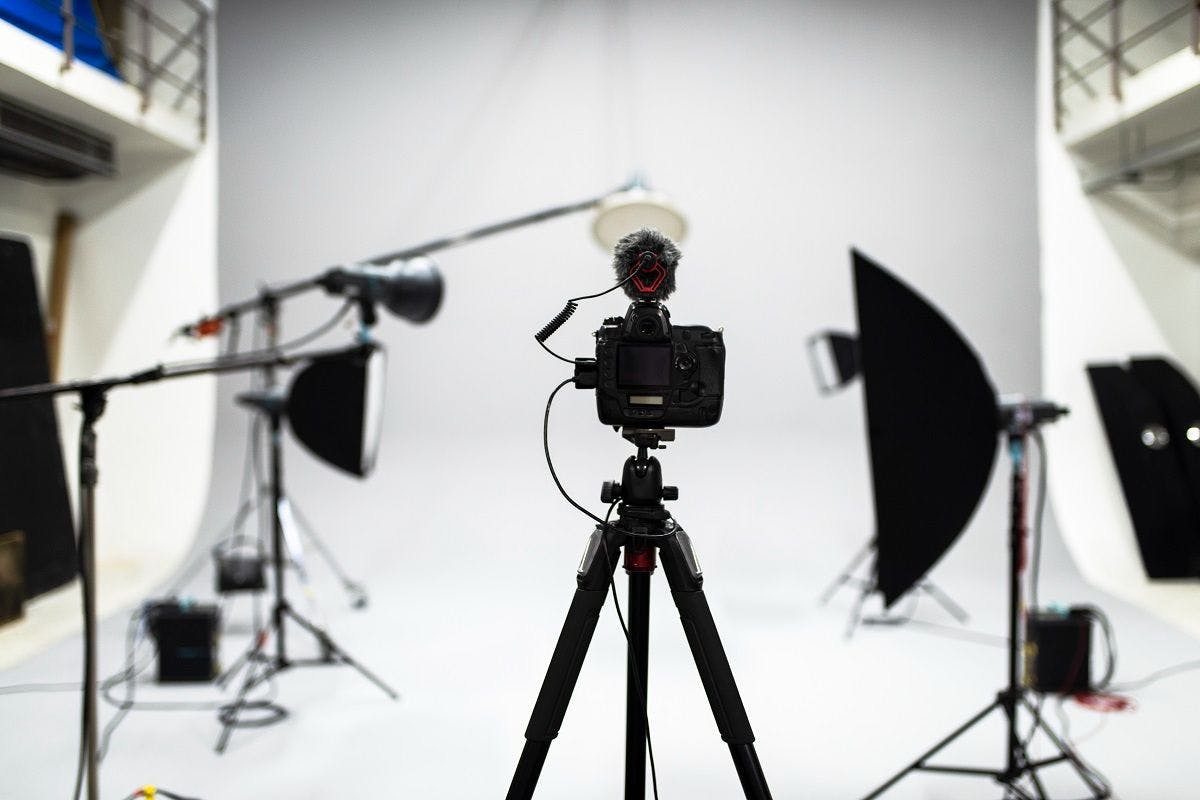Feeling a bit tight on budget for hiring a professional corporate video agency? No worries, we've got a solution for you: try a DIY setup right in the comfort of your home. And if you're not sure where to start, don't fret.
We've put together a quick guide to help you get started smoothly. Let's begin with the essential equipment you'll need.
Essential Equipment for a DIY Studio Setup
- Cameras and Camcorders: Choose a suitable camera or camcorder, or even use a smartphone with good video capabilities. Ensure it can capture high-resolution footage.
-
Lighting Equipment: Acquire proper lighting equipment or make use of natural light to illuminate your subject effectively. Consider budget-friendly options like LED lights.
-
Audio Gear: Invest in a quality microphone to ensure a clear sound. USB microphones, known for their affordability and good audio quality, are a great option. Additionally, take measures to minimize any background noise and echo that could affect the audio recording.
- Tripods and Stabilizers: Use a tripod or stabilizer to keep your camera steady and avoid shaky footage. Ensure it's compatible with your equipment's weight.
- Backgrounds and Sets: Select a clean and clutter-free backdrop to maintain focus on your subject. Optionally, create a professional-looking set with relevant props and decorations.
Now that you've got your equipment ready, here's how to set it up for the best results.
Setting Up Your Home Studio
- Choose the Right Location
Find a quiet, clutter-free spot in your home with ample space for your equipment. Ensure it's close to power outlets for easy setup.
- Optimize Natural Light
Position your setup near windows to harness natural light. Use curtains or diffusers to control light intensity.
- Soundproof and Improve Sound Quality
Reduce background noise by using thick curtains, rugs, or foam panels. Test your setup for echo and make adjustments as needed.
- Arrange Equipment Efficiently
Place your camera, lighting, and audio gear within arm's reach. Keep cables organized and unobtrusive for a clean workspace.
As you've learned how to set up your studio, it's time to plan the pre-production phase effectively.\
Pre-production Planning
- Define Your Video's Purpose and Message
Clarify the video's objective and what you want to convey to your audience. Identify key messages and the main takeaway.
- Write a Script and Create Storyboards
Draft a script outlining the dialogue and narration. Develop storyboards to visualize scenes and shots. In today's digital age, utilizing
- Assemble a Production Team (if necessary)
If you have a budget, recruit team members like camera operators, actors, or editors. Clearly define roles and responsibilities for each team member. If not, learn to do each role and manage it independently.
- Plan Your Shooting Schedule
Create a detailed shooting schedule with dates, times, and locations. Allow for extra time for setup and any unforeseen issues.
Now that your pre-production is sorted, it's time to focus on the actual shoot.
Shooting Techniques and Tips
-
Set the camera to the highest resolution for quality.
-
Frame shots with the subject in mind, maintaining balance and focus.
-
Position lighting sources to illuminate the subject evenly.
-
Avoid harsh shadows and overexposure.
-
Monitor audio levels to prevent distortion or low volume.
-
Use microphones close to the sound source for clear sound.
-
Guide actors or presenters with clear directions.
-
Ensure they maintain eye contact and speak clearly.
With your footage ready, it's time for post-production editing.
Post-production Essentials
- Video Editing Software
- Choose a user-friendly and budget-friendly video editing software.
- Editing Process and Techniques
- Review and organize your footage before editing.
- Trim, cut, and arrange clips to create a cohesive narrative.
- Add transitions, effects, and color correction as needed.
- Graphics and Animation
- Include graphics, lower thirds, and titles to enhance visual appeal.
- Use animation for dynamic elements.
- Sound Editing
- Adjust audio levels and eliminate background noise.
- Enhance sound quality with music, narration, or sound effects.
- Exporting
- Export your video in a suitable format, such as MP4.
- Share your finished video on platforms like YouTube, Vimeo, or social media.
As your video begins to form, it's crucial to address any potential issues that may come up.
Troubleshooting Common Issues
- Dealing with Background Noise: Identify sources of noise and address them (e.g., close windows, turn off noisy appliances). Use audio editing software to remove unwanted noise during post-production.
- Handling Technical Glitches: Ensure all equipment is functioning correctly before shooting. Troubleshoot technical issues with online resources or seek assistance.
- Overcoming Lighting Challenges: Adjust lighting placement and intensity to eliminate shadows and glare. Use reflectors or diffusers to achieve balanced lighting.
- Editing Mistakes and Revisions: Review your video thoroughly and note areas that need improvement. Re-edit and make necessary revisions to enhance the final product.
Now that your video is all polished and ready, let's talk about how you can get it out into the world.
Promoting and Distributing Your Corporate Videos
- Set up a YouTube channel or use a corporate video platform to host your videos.
- Optimize video titles, descriptions, and tags for searchability.
- Share your videos on social media platforms, engaging with your target audience.
- Incorporate video links in email marketing campaigns to reach a wider audience.
- Monitor video analytics to gauge performance and viewer engagement.
- Use feedback to make improvements in content, production, and distribution strategies.
Conclusion
Now that you have all the necessary information, you can confidently start setting up your DIY studio to create impressive videos from the comfort of your own home. Don’t wait, give it a try now!
However, if you find yourself still struggling despite this guide, don't hesitate to reach out to a reliable corporate video production company to handle the task for you. After all, at least you tried!


